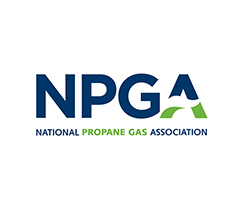LIHEAP funds could grow with bill
The Low-Income Home Energy Assistance Program could get $3.4 billion in each of the next three years under the Poverty Reduction & Prevention Act of 2003.
The bipartisan bill would also allow states to get emergency funds if home energy costs rise at least 20 percent above the five-year average in a given state or region and stay up at least a month.
The bill also calls for two studies over two years. The General Accounting Office would evaluate the Residential Energy Assistance Challenge grants states get for demo projects. The Department of Health & Human Services would report on how well LIHEAP is doing overall, specifically who gets assistance and how many people it is saving from having their power shut off.
The report would also develop a protocol for states to collect information from propane suppliers on their LIHEAP accounts, including how many are past due, how many disconnection notices they issued, the number of disconnections, reconnections, uncollectibles, etc. HHS would also report on the extent of health problems caused by lack of home fuel.
Meanwhile, four west coast senators introduced a measure to make it easier for those states to get emergency LIHEAP funds. The LIHEAP Emergency Reform Act would require HHS to consider regional, rather than national, price trends, energy supply and weather when considering when energy price spikes constitute an emergency. The bill, coming after a series of controversies about distribution of the LIHEAP contingency fund, would allow governors to apply for contingency funds.
Congress also passed a spending bill for the current fiscal year with $274.5 million for energy conservation grant programs, $230 million for weatherization and $44.5 million for state energy programs. The bill funds $5 million for the Northeast Home Heating Oil Reserve and mandates a plan on when to use the stock. The Energy Information Administration gets a budget of $80 million.
Briefly Speaking
Feds see winter price stability
EIA projects nearly stable propane prices this winter, with a 3 percent drop in use. Projections assume normal weather.
The end-of-October average residential propane price of 132.5 cents per gallon amounted to an increase of 17.4 cents from a year earlier. The average wholesale price stood at 63.9 cents, up 8.7 cents, EIA reports.
Stock builds grew every month between May through October. After falling 6.1 million barrels below 2002 year-to-date levels in September, inventories at the start of November stood 1.7 million barrels above November 2002 levels.
Background checks delayed
The Transportation Safety Administration and the Federal Motor Carrier Safety Administration delayed the compliance date for requiring TSA background checks before states could give hazmat endorsements on commercial driver’s licenses. The agencies moved the date from Nov. 3 to April 1 and they reserve the right to postpone the date in individual cases to as late as Dec. 1, 2004.
Hazmat transportation regs
Starting next October, federal rules will clarify when hazmat transportation regulations apply to preparation, loading, unloading and storage.
The rules will apply from the time carriers take possession until they deliver the product. The new provisions state that rules will apply to packing and loading, whether or not performed by the carrier and whenever a transporter maintains possession of product, even if not in transit. Details are in the Oct. 30 Federal Register.
















